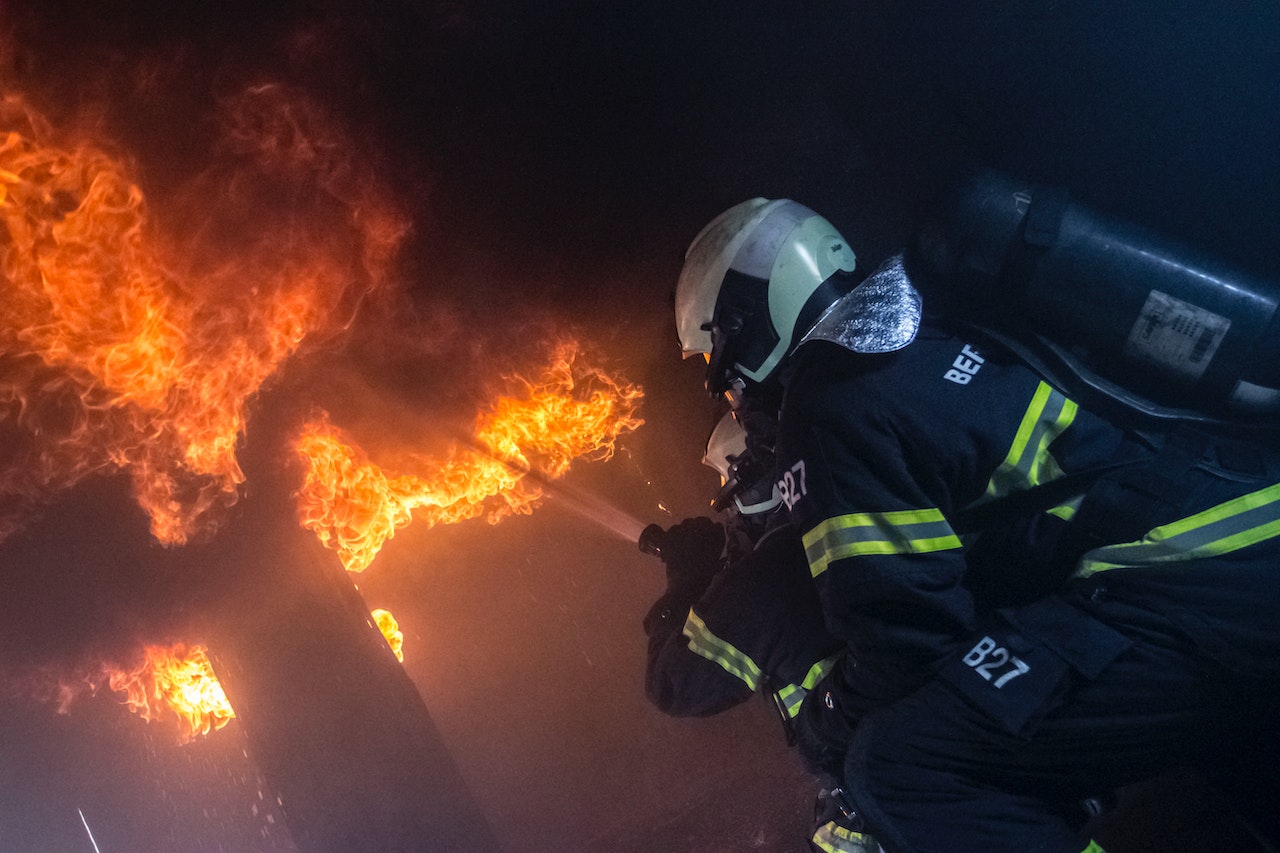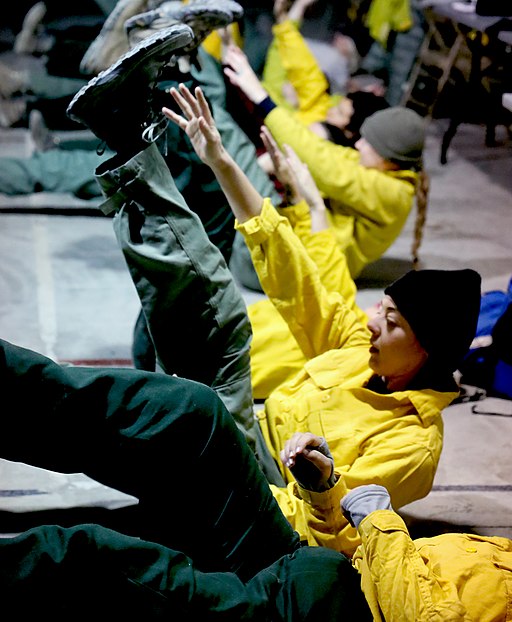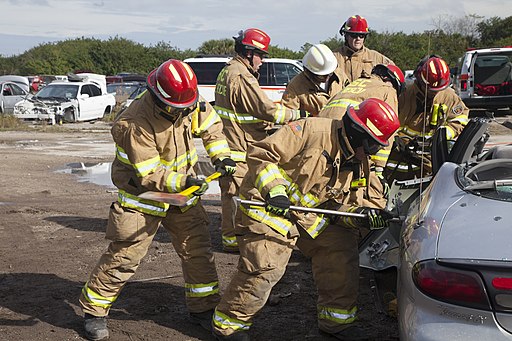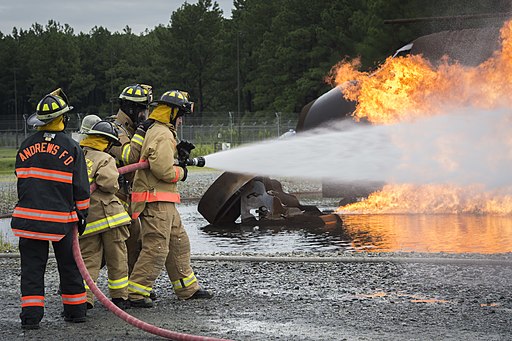It takes fearless, dedicated, and highly-trained individuals to become a firefighter. Firefighters receive specialized training to prepare them for the dangers they will face while on the job. Every day, firefighters put their lives in danger to protect us from fires and other emergencies, so these heroes should prepare for any situation.
From physical conditioning and hazardous materials training to hands-on experience during live fire simulations, firefighters undergo an intense and comprehensive series of drills and exercises to excel in their field.
Let’s explore the aspects of firefighter training.

Importance of Firefighter Training
Whether responding to a structure fire or rescuing someone from a burning building, firefighters must be physically fit and know how to operate firefighting gear to carry out their duties safely. To do this, they need specialized instruction. This includes learning to use ladders efficiently, practice search-and-rescue operations, and operate pumps connected to hoses for extinguishing fires.
Firefighters also learn about hazardous material identification and control and First Aid/CPR protocols. This kind of comprehensive instruction ensures that when facing life-or-death situations, firefighters have the skills required for effective decision-making in the heat of the moment without hesitation.
Firefighter training is intense but necessary if these brave men and women are expected to perform at peak levels when their lives are on the line.
Components of Firefighter Training:
Physical Training
At a fire academy, physical training is just as important as learning technical skills. Firefighters are expected to handle extreme physical and mental stress daily. They must possess strength and endurance to perform their duties safely. Therefore, before graduating from the fire academy, trainees must successfully complete a series of tests and exercises that gauge their ability to handle such physical demands.
The physical component of firefighter training often begins with basic calisthenics designed to build strength and endurance. Typical exercises include push-ups, sit-ups, pull-ups, running or jogging for several miles, and carrying heavy objects such as hoses or ladders.

Empowering women. Women in Wildfire Boot Camp provides a valuable opportunity for women to acquire essential wildland firefighting skills. BLM Oregon & Washington, CC BY 2.0 via Wikimedia Commons
The fire academy also provides nutrition and hydration instruction for firefighters to help them maintain optimal fitness levels during operations.
In addition to physical conditioning exercises, firefighter trainees must also pass tests designed to measure their overall fitness level. This typically includes the “Candidate Physical Ability Test” (CPAT). This test assesses an individual’s ability to perform tasks such as raising ladders and carrying heavy equipment.
Most fire academies offer courses in first aid along with other medical services that firefighters may encounter during operations. Such lessons teach students how to administer medical assistance in high-pressure situations. These help ensure that trainees are physically prepared for any emergency they may face while performing their duties as firefighters.
Overall physical training plays an essential role in preparing future firefighters by ensuring they possess the necessary strength and endurance required for such a dangerous profession. Through rigorous training at fire academies, new firefighters can be confident that they have received the best possible training.
Technical Skills
Technical skills are a critical component of fire training and cover a wide range of topics, including the use of personal protective equipment, fire behavior, and fire science.
Firefighting training may include college courses, training courses offered by the fire service, or a combination. Typically, experienced firefighters with expertise in fire behavior serve as training instructors. They also have a deep understanding of the incident command system, a standardized approach to managing emergencies.
Firefighters must train in the proper use of firefighting equipment and personal protective equipment, such as protective clothing, helmets, gloves, and respirators.

Rescue Ready. Special Operations firefighters sharpen their skills with vehicle extrication training at an auto salvage yard.
Some other technical skills that firefighters may learn include:
- Emergency medical training. Many firefighters are train as emergency medical technicians (EMTs). They are able to provide medical assistance at the scene of an emergency.
- Rescue techniques. Firefighters may train in various rescue techniques, such as rope rescue, confined space rescue, and water rescue.
- Hazardous materials response. Firefighters may train in the proper procedures for handling and containing hazardous materials, such as chemicals and explosives.
- Building construction. Firefighters should be familiar with the different types of building construction. They should know how building construction may affect the spread of a fire.
- Vehicle extrication. Firefighters may be trained to use specialized equipment to extricate people from vehicles involved in accidents.
- Wildland firefighting. Some firefighters may be trained in the techniques and tactics used to fight wildfires.
Firefighter Training Requirements
To become a firefighter, candidates must meet certain requirements and complete a training program.
The hiring process for a firefighting job typically includes a physical exam to ensure that candidates are physically fit enough to handle the demands of the job. Candidates may also be required to have a valid driver’s license and pass a written exam.
Basic requirements for becoming a firefighter often include a high school diploma and a clean background check.
Many fire departments require candidates to complete training through certified programs such as the National Fire Protection Association (NFPA) or the National Incident Management System (NIMS). These programs cover basic firefighter skills, fire behavior, emergency medical technician (EMT) training, and more.
During the training program, aspiring firefighters may spend time learning hands-on skills and practicing firefighting tasks at a fire station. They should also complete a physical abilities test to demonstrate their readiness for the demands of the job.

Future firefighters in action. Joint Base Andrews Fire Explorer Academy cadets put their training to the test with hose line drills.
Upon completion of the training program, candidates can become a firefighter and begin serving in their new role at a fire department. Some firefighters may choose to continue their education at a community college or other institution to further their knowledge and skills in firefighting.
Firefighter training is a rigorous and comprehensive process that prepares individuals for the demands and dangers of the job. From physical conditioning and hazardous materials training to hands-on experience during live fire simulations, firefighters undergo a wide range of drills and exercises to ensure they are fully prepared for any situation they may encounter.
Becoming a firefighter requires dedication, bravery, and a willingness to put oneself in harm’s way to protect others. It is no small feat, but those who are up to the challenge are rewarded with the opportunity to make a real difference in their communities as they work to save lives and protect property.


